
Everyday Health is taking the next two weeks off. Enjoy your holidays, whatever they might be, and have a great new year! We'll see you on January 1st!


Not to be confused with qigong, the traditional Chinese discipline of circulating energy within the body, "tree-gong" is rooted in the Tao Te Ching (a classic Chinese philosophy text) and ancient Chinese principles of energy flow, said Ms Law's instructor, Mr Thomas Kwan.
The 50-year-old said that the energy from plants and trees aids the human body in "getting rid of 'congestion' that makes us feel unwell".

The once-slim Chinese nation, kept thin by poverty and communist policies in the 20th century, is now on the fast track to a U.S.-style obesity crisis.


Words of truth are not beautiful;
Beautiful words are not truthful.
The good do not argue;
Those who argue are not good.
The wise are not extensively learned;
The extensively learned are not wise.
The Sage is not mean.
Simply doing things for others he feels greater fulfillment.
Simply giving to others he feels he has gained more.
The Tao of heaven benefits and does not harm.
The Tao of the Sage is to accomplish without competing.
Words to trust are not refined.
Words refined are not to trust.
Good men are not gifted speakers.
Gifted speakers are not good.
Experts are not widely learned;
The widely learned are not expert.
Wise rulers for themselves keep naught,
Yet gain by having done for all.
Have more for having freely shared;
Do good not harm is heaven's Way;
The wise act for and not against.


Battlefield acupuncture has been especially effective among patients suffering from a combination of combat wounds, typically a brain injury or severed limbs, burns and penetrating wounds along with severe disorientation and anxiety.
But neither does acupuncture provoke the kind of adverse side effects, allergic reactions and potential addiction associated with powerful psychotropic drugs often used to dull the pain of the severely wounded.
"This is one of the fastest pain attenuators in existence - the pain can be gone in five minutes," said Niemtzow, a physician, acupuncturist and senior adviser to the Air Force surgeon general.
"We use acupuncture as an adjunct" to traditional therapy, said Niemtzow. "The Chinese have used it for 5,000 years. It works, and it's powerful."
"Acupuncture has been very helpful for people for whom other treatment has failed," said Lt. Col. Terri L. Riutcel, an Air Force psychiatrist who deployed to Iraq last year where she treated victims of roadside bomb blasts, among other injuries.
Acupuncture "is very well tolerated and there are very few side effects," apart from occasional bruising, she said. "I think it has tremendous potential for military medicine."
Battlefield acupuncture caught the eye of U.S. Army Rangers, who often operate in remote locations. At their invitation, Niemtzow and his team trained some Rangers last summer.
Nonetheless, advocates of the practice recognize that they must overcome skepticism within the ranks of military doctors.
"Oh, sure, some haven't gotten the word," said Burns, the clinic chief. "We are very much ahead of the curve."
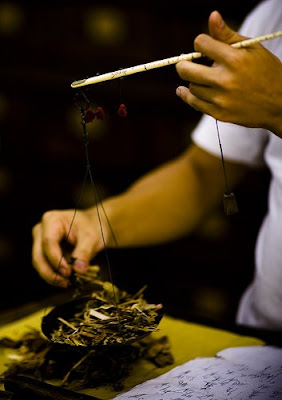







| MBA | 2 years | Summers off |
| JD (law degree) | 3 years | Summers off |
| MD | 4 years | Summers off |
| MSTOM (Chinese medicine degree) | 4 years | STRAIGHT THROUGH FOR 4 YEARS!!! |
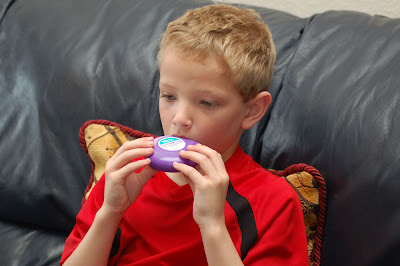

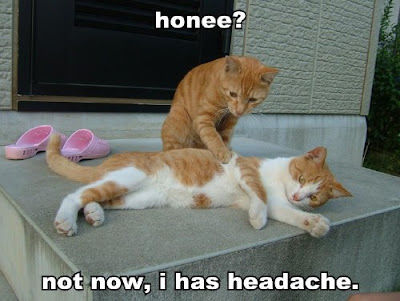
"Acupuncture is becoming a favorable option for a variety of purposes, ranging from enhancing fertility to decreasing post-operative pain, because people experience significantly fewer side effects and it can be less expensive than other options," Dr. Tong Joo Gan, who led the study, said in a statement.
"This analysis reinforces that acupuncture also is a successful source of relief from chronic headaches."






Acrid and warm, it travels and pierces, reaching everywhere, including the five yin organs... In summary, its actions are best at unblocking and thrusting out the orifices, expelling cold-dampness, clearing away noxious pathogens, dispersing swollen sores, transforming gathered accumulations, warming the Spleen and Stomach, and promoting the flow of all qi.
To treat emerging large and deep sores, applying moxa is superior to using herbs, as the heat and toxicity are separated and the upper and lower [layers of the sore] are blocked [from communicating]. The toxic qi must be drained before it can be released and dispersed. Within the first day of its emergence, use a large clove sliced as thin as a coin, place it on the sore and moxa it, changing the garlic every three cones. Generally, one-hundred cones is the number needed. First, this will make the sore remain small; second, it will prevent putrefaction; and third, the perforation of the sore will readily close. In one application, three benefits. However, this definitely must not be used on the head or neck, for fear that it will lead the qi upward, causing even more problems.
Ground into paste and applied to the umbilicus, it reaches the lower burner to eliminate edema and facilitate the movement of stool and urine. Bandaged to the middle of the sole, it guides heat downward to treat diarrhea, sudden dysenteric disorder, and both dry and damp-type sudden turmoil disorders; it also stops nosebleeds. Held in the rectum, it unblocks the pylorus and treats plugged and rejecting disorder.


Diabetes has not seen a decline or even a plateauing, and the death rate from diabetes continues to rise
The numbers just keep going higher and higher, and what we want to say is, 'It's time for government and businesses to focus on it'
Drugmakers such as Novo Nordisk also see diabetes as an important — and lucrative — disease.
| For the crepes: |
| 3 | cups (708 ml) skim milk or unsweetened almond milk |
| 4 | large eggs |
| 1/2 | teaspoon ( 2.5ml) salt (optional) |
| 2 | cups (250 g) unbleached flour |
| For the mushroom filling |
| 2 | teaspoons (10 ml) olive oil |
| 2 | cups, about 10 ounces (315 g), finely chopped onions |
| 1 1/2 | pounds (750 g) mixed fresh mushrooms, chopped coarsely |
| 2 | teaspoon minced garlic |
| 5 | tablespoons (15 g) chopped fresh dill |
| 3-4 | tablespoons (45-60 g) unbleached flour |
| freshly ground pepper, to taste |
| 1/4 | cup( 60 ml) Madeira or sherry |
| 1/2 to 2/3 | cup (120-160 ml) 98% fat free, no-salt-added canned chicken broth |
| fat-free sour cream |
| extra dill, garlic powder, chives, or horseradish for garnish |
| Per 2-blintz serving: | 58 calories (16% calories from fat), 3 g protein, 1 g total fat (90.2 g saturated fat), 9 g carbohydrates, 0 dietary fiber, 24 mg cholesterol, 19 mg sodium |
| Diabetic exchanges: | 1/2 carbohydrate (bread/starch) |





...the Ministry is taking a proactive approach to educating all children and their families about healthy food options and the importance of daily exercise, through various healthy lifestyle initiatives in schools and communities.It is reported that 2 percent of those between 15 and 19 have been diagnosed with diabetes, but that the number could be as high as 17 percent. The story of Ryan Dwyer describes how being diagnosed with diabetes affected aspects of his social life and education:
This story made me think about how illness and disease is perceived so differently across cultures and communities. Diabetes is known to be a non-communicable disease. It seems strange that even at school a kid diagnosed with diabetes can be openly discriminated against. With a public stigma against the diagnosis, it's no wonder there is difficulty in finding out what the prevalence of diabetes is amongst teens there."I woke up with two IVs in my arm and when I came to my senses the doctor told me I had diabetes," he said. "I started crying. I said diabetes is for old people like my grandmother and I am no where near being a grandfather."
For him, back then having diabetes was like a death sentence as he was discriminated against by his schoolmates.
"Nobody wanted to be my friend. I couldn't play the games that I wanted to play anymore," said Dwyer who is now a mixologist. "I got a separate chair in class and I had to write on the ground because I didn't have a desk."
For decades, researchers believed that if people with diabetes lowered their blood sugar to normal levels, they would no longer be at high risk of dying from heart disease. But a major federal study of more than 10,000 middle-aged and older people with Type 2 diabetes has found that lowering blood sugar actually increased their risk of death, researchers reported Wednesday.
The researchers announced that they were abruptly halting that part of the study, whose surprising results call into question how the disease, which affects 21 million Americans, should be managed.
The study’s investigators emphasized that patients should still consult with their doctors before considering changing their medications.
Among the study participants who were randomly assigned to get their blood sugar levels to nearly normal, there were 54 more deaths than in the group whose levels were less rigidly controlled. The patients were in the study for an average of four years when investigators called a halt to the intensive blood sugar lowering and put all of them on the less intense regimen.
The results do not mean blood sugar is meaningless. Lowered blood sugar can protect against kidney disease, blindness and amputations, but the findings inject an element of uncertainty into what has been dogma — that the lower the blood sugar the better and that lowering blood sugar levels to normal saves lives.
Medical experts were stunned.
“It’s confusing and disturbing that this happened,” said Dr. James Dove, president of the American College of Cardiology. “For 50 years, we’ve talked about getting blood sugar very low. Everything in the literature would suggest this is the right thing to do,” he added.
Dr. Irl Hirsch, a diabetes researcher at the University of Washington , said the study’s results would be hard to explain to some patients who have spent years and made an enormous effort, through medication and diet, getting and keeping their blood sugar down. They will not want to relax their vigilance, he said.
“It will be similar to what many women felt when they heard the news about estrogen,” Dr. Hirsch said. “Telling these patients to get their blood sugar up will be very difficult.”
Dr. Hirsch added that organizations like the American Diabetes Association would be in a quandary. Its guidelines call for blood sugar targets as close to normal as possible.
And some insurance companies pay doctors extra if their diabetic patients get their levels very low.
The low-blood-sugar hypothesis was so entrenched that when the National Heart, Lung and Blood Institute and the National Institute of Diabetes and Digestive and Kidney Diseases proposed the study in the 1990s, they explained that it would be ethical. Even though most people assumed that lower blood sugar was better, no one had rigorously tested the idea. So the study would ask if very low blood sugar levels in people with Type 2 diabetes — the form that affects 95 percent of people with the disease — would protect against heart disease and save lives.
Some said that the study, even if ethical, would be impossible. They doubted that participants — whose average age was 62, who had had diabetes for about 10 years, who had higher than average blood sugar levels, and who also had heart disease or had other conditions, like high blood pressure and high cholesterol, that placed them at additional risk of heart disease — would ever achieve such low blood sugar levels.
Study patients were randomly assigned to one of three types of treatments: one comparing intensity of blood sugar control; another comparing intensity of cholesterol control; and the third comparing intensity of blood pressure control. The cholesterol and blood pressure parts of the study are continuing.
Dr. John Buse, the vice-chairman of the study’s steering committee and the president of medicine and science at the American Diabetes Association, described what was required to get blood sugar levels low, as measured by a protein, hemoglobin A1C, which was supposed to be at 6 percent or less.
“Many were taking four or five shots of insulin a day,” he said. “Some were using insulin pumps. Some were monitoring their blood sugar seven or eight times a day.”
They also took pills to lower their blood sugar, in addition to the pills they took for other medical conditions and to lower their blood pressure and cholesterol. They also came to a medical clinic every two months and had frequent telephone conversations with clinic staff.
Those assigned to the less stringent blood sugar control, an A1C level of 7.0 to 7.9 percent, had an easier time of it. They measured their blood sugar once or twice a day, went to the clinic every four months and took fewer drugs or lower doses.
So it was quite a surprise when the patients who had worked so hard to get their blood sugar low had a significantly higher death rate, the study investigators said.
The researchers asked whether there were any drugs or drug combinations that might have been to blame. They found none, said Dr. Denise G. Simons-Morton, a project officer for the study at the National Heart, Lung and Blood Institute. Even the drug Avandia, suspected of increasing the risk of heart attacks in diabetes, did not appear to contribute to the increased death rate.
Nor was there an unusual cause of death in the intensively treated group, Dr. Simons-Morton said. Most of the deaths in both groups were from heart attacks, she added.
For now, the reasons for the higher death rate are up for speculation. Clearly, people without diabetes are different from people who have diabetes and get their blood sugar low.
It might be that patients suffered unintended consequences from taking so many drugs, which might interact in unexpected ways, said Dr. Steven E. Nissen, chairman of the department of cardiovascular medicine at the Cleveland Clinic.
Or it may be that participants reduced their blood sugar too fast, Dr. Hirsch said. Years ago, researchers discovered that lowering blood sugar very quickly in diabetes could actually worsen blood vessel disease in the eyes, he said. But reducing levels more slowly protected those blood vessels.
And there are troubling questions about what the study means for people who are younger and who do not have cardiovascular disease. Should they forgo the low blood sugar targets?
No one knows.
Other medical experts say that they will be discussing and debating the results for some time.
“It is a great study and very well run,” Dr. Dove said. “And it certainly had the right principles behind it.”
But maybe, he said, “there may be some scientific principles that don’t hold water in a diabetic population.”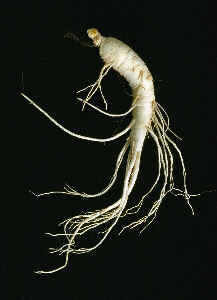
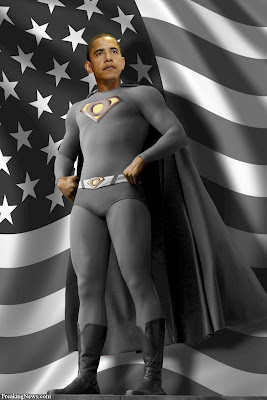

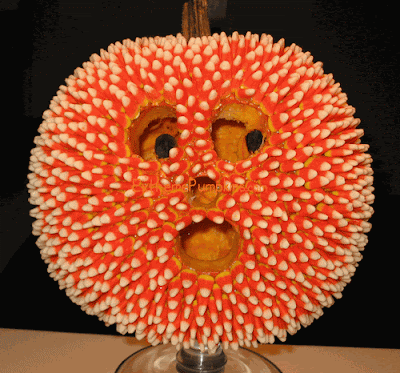



"We originally thought obese people would experience more reward from food. But we see obese people only anticipate more reward; they get less reward. It is an ironic process," Stice tells WebMD.